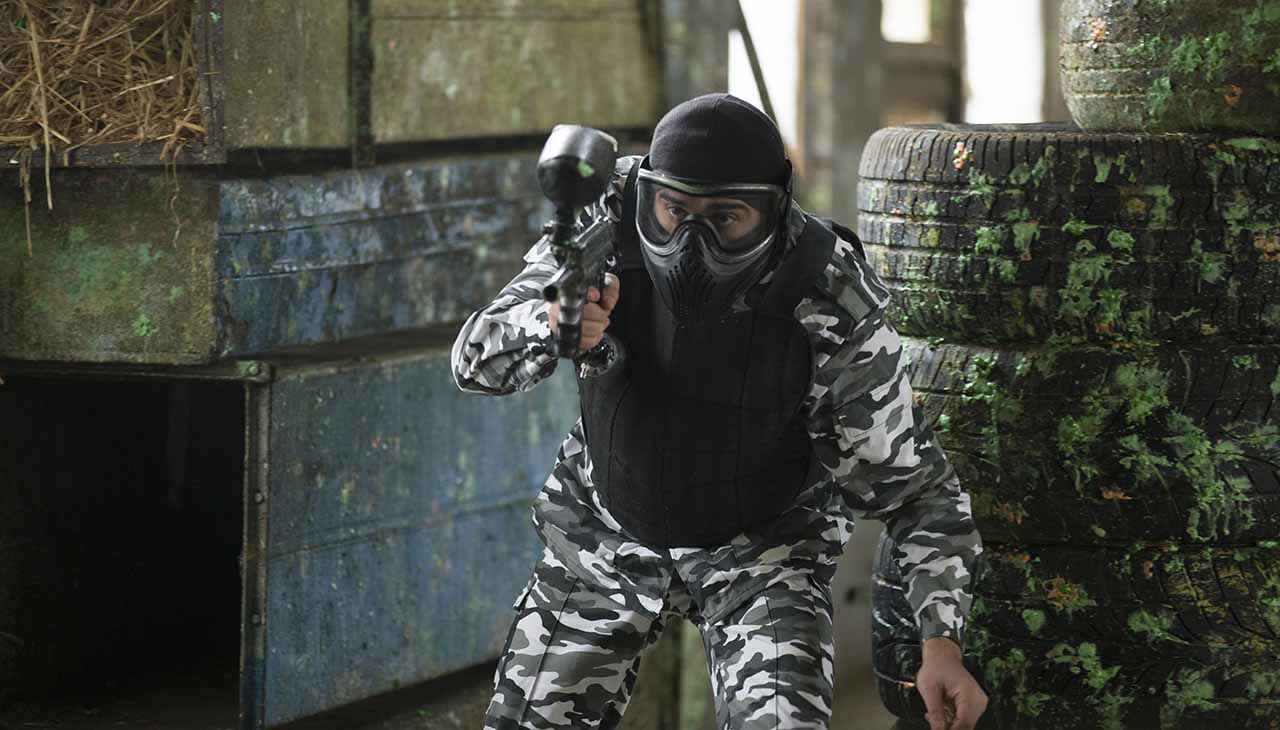Paintball, a game of strategy, skill, and stealth, has evolved into a highly competitive sport, drawing enthusiasts from around the globe. The art of camouflage plays a pivotal role in this dynamic game, enabling players to blend seamlessly with their environment, evade detection, and execute surprise attacks. This guide dives into the intricacies of camouflage techniques and the essential gear required to gain the upper hand in paintball battles. We’ll explore how the right combination of skills and equipment can elevate your game, turning you into an elusive target and a formidable opponent. Whether you’re a novice seeking to improve your stealth or a seasoned player aiming to refine your tactics, this guide offers valuable insights into mastering the art of camouflage in paintball.
Understanding Camouflage
Camouflage works by mimicking the colors and patterns of the environment, making a player virtually invisible to the opposing team. In dense forests, dark and green patterns help players blend with the foliage and shadows, whereas, in arid or desert landscapes, tan and brown hues are more effective. Urban environments require a mixture of grey, black, and brown, reflecting the industrial setting. The importance of blending in cannot be overstated; it allows players to move undetected, set ambushes, and avoid becoming easy targets. Minimizing visibility is not just about color; it involves understanding the play of light and shadow, movement, and the use of natural cover. Successful camouflage requires a comprehensive approach, combining the right gear with an understanding of how to use the environment to one’s advantage.
Camouflage Techniques
Tips for Effective Use of Natural Cover
To maximize your stealth in paintball, it’s crucial to utilize natural cover effectively. This involves more than simply standing behind the nearest tree or bush. Savvy players analyze the terrain to find cover that complements their camouflage, breaking up their outline and merging with the background. When moving, always stay low to minimize your profile and move slowly to avoid drawing attention. Whenever possible, position yourself in locations where natural light and shadows contribute to your disguise, rather than expose you.
Movement Strategies to Avoid Detection
Movement in paintball is as much an art as it is a strategy. To avoid detection, adopt a slow and calculated approach. Quick, jerky movements are easily spotted, so when you do need to move, do it smoothly and with purpose. Use the terrain to your advantage; crawling or crouching often makes you less noticeable. Practice moving with minimal noise, and whenever possible, coordinate your movements with ambient sounds to mask your footsteps. Remember, the more predictably you move, the easier you are to track, so change your speed and pattern frequently.
Utilizing Shadows and Light to Your Advantage
Shadows and light play a significant role in camouflage. By understanding how light can reveal or conceal, you can significantly enhance your stealth capabilities. Always be aware of the direction from which light is coming and how your shadow is cast. Moving along the edge where shadows and light meet can make you harder to spot. Additionally, in bright conditions, staying in the shadows can help you blend into the surroundings more effectively. Conversely, on overcast days when shadows are less pronounced, focusing on matching your camouflage to the environment’s colors and patterns becomes even more critical.
Camouflage Gear
Choosing the right camouflage gear is fundamental to achieving stealth on the paintball battlefield. This includes not only the base layer of clothing but also additional accessories that can enhance concealment. For different terrains, the appropriate clothing can vary significantly.
Clothing for Different Terrains
- Forests and Woodlands: Gear with green, brown, and black patterns is ideal, mimicking the natural environment of trees, brush, and shadows.
- Desert Landscapes: Lighter colors such as tan, khaki, and beige are more suitable, reflecting the sandy and rocky terrain.
- Urban Settings: Camouflage in urban environments should incorporate grays, blacks, and browns, blending in with concrete, asphalt, and urban structures.
Importance of Face Paint and Accessories
In addition to clothing, face paint and accessories play a critical role in complete camouflage. Face paint helps to break up the distinctive shapes and features of the face, which can be particularly noticeable. Patterns that mimic natural textures can significantly reduce the likelihood of being spotted. Accessories like gloves, hats, and even camouflaged gear bags help to eliminate any non-natural colors or shapes that could stand out in the environment.
Overview of Camouflage Patterns and Their Effectiveness
Camouflage patterns are designed to mimic the specific elements of different terrains. The most common patterns include:
- Woodland: Characterized by large, irregular patches of green, brown, black, and tan. Effective in forested areas.
- Digital: Made up of small, pixelated patterns. It is versatile and can be adapted to various environments, including urban.
- Multicam: A multi-environment pattern that combines greens, browns, and beiges. Effective across a range of terrains.
- Desert: Consists of light tans and browns. Best for arid, desert environments.
- Urban: Incorporates grays and blacks, ideal for indoor arenas or urban landscape paintball fields.
Selecting the right pattern is critical for blending into the surrounding environment effectively. While no camouflage can render a player completely invisible, the correct combination of gear, technique, and movement can make a significant difference in staying undetected.
